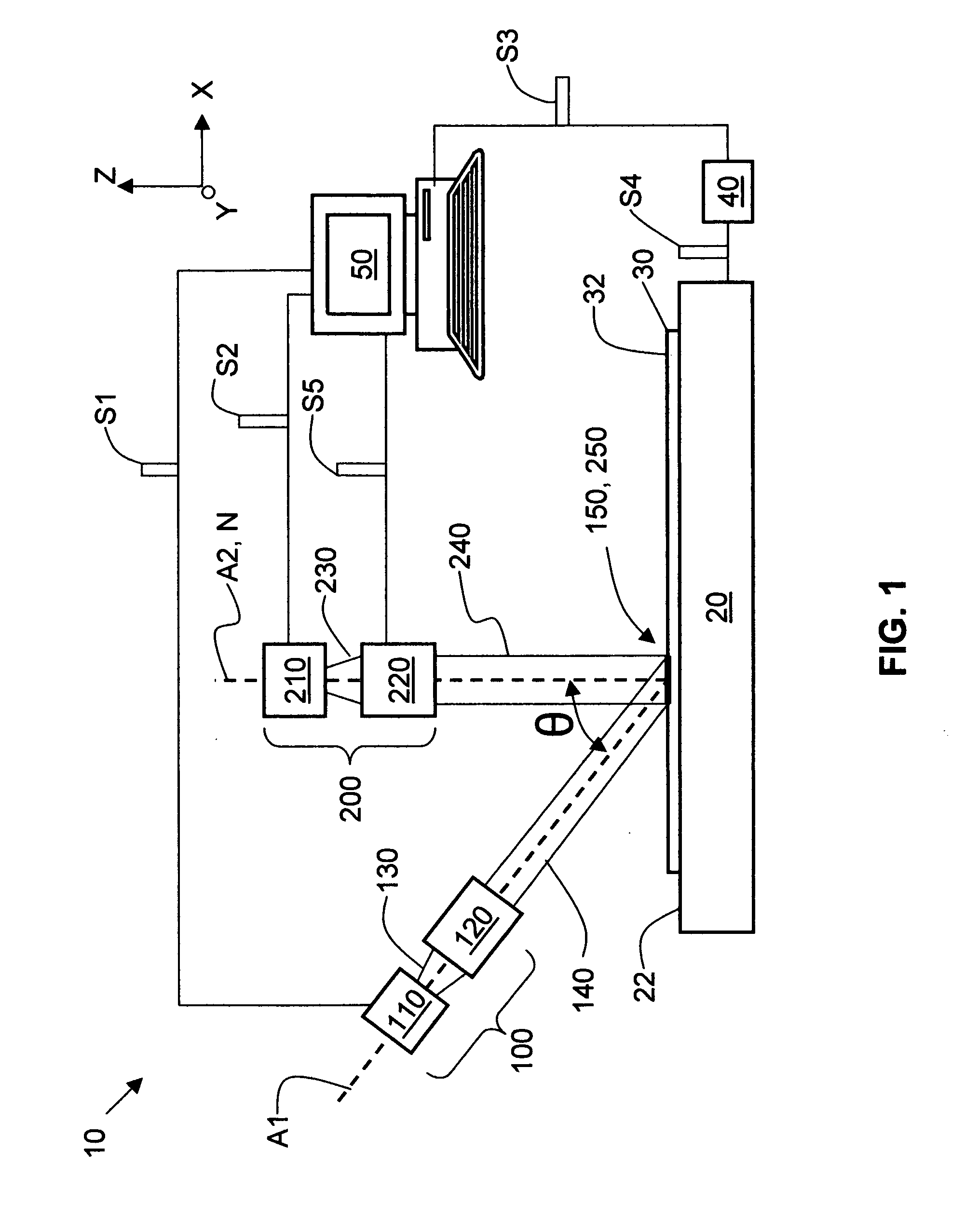Apparatus and methods for thermally processing undoped and lightly doped substrates without pre-heating
a technology of undoped and lightly doped substrates, applied in the direction of electrical apparatus, basic electric elements, semiconductor/solid-state device manufacturing, etc., can solve the problems of low resistance, low absorption of silicon wafers, and a deep change in the concentration of dopant atoms, so as to increase the absorption of an annealing radiation beam
- Summary
- Abstract
- Description
- Claims
- Application Information
AI Technical Summary
Benefits of technology
Problems solved by technology
Method used
Image
Examples
Embodiment Construction
[0022] The present invention uses a relatively low-power, short-wavelength activation radiation beam concurrently with a relatively high-power, long-wavelength annealing radiation beam to process a semiconductor substrate. The short-wavelength activation beam has a photon energy greater than the semiconductor bandgap of the semiconductor substrate so that its absorption in the top surface of the substrate creates sufficient free carriers to absorb the longer-wavelength, annealing radiation beam. The annealing beam provides most of the energy required to generate a temperature high enough to process the substrate such as activating doped regions in the substrate. In the specific case of a 10.6 micron annealing beam operating on a silicon substrate, once the substrate surface reaches 400° C. or 500° C., the thermal generation of charge carriers is sufficient to absorb the long-wavelength radiation and short-wavelength activation is no longer required.
[0023] This approach obviates the...
PUM
 Login to View More
Login to View More Abstract
Description
Claims
Application Information
 Login to View More
Login to View More - R&D
- Intellectual Property
- Life Sciences
- Materials
- Tech Scout
- Unparalleled Data Quality
- Higher Quality Content
- 60% Fewer Hallucinations
Browse by: Latest US Patents, China's latest patents, Technical Efficacy Thesaurus, Application Domain, Technology Topic, Popular Technical Reports.
© 2025 PatSnap. All rights reserved.Legal|Privacy policy|Modern Slavery Act Transparency Statement|Sitemap|About US| Contact US: help@patsnap.com



